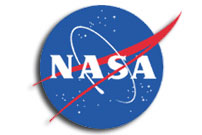GAO: Property Management: NASA’s Goal of Increasing Equipment Reutilization May Fall Short without Further Efforts

GAO-09-187, January 30. Full report
What GAO Found
Inconsistent descriptions and inaccurate information on the condition of equipment hamper the PP&E Module’s ability to produce equipment matches and enhance reutilization. Although descriptions of equipment items are crucial for the new module to succeed in identifying equipment for reutilization, NASA has not provided detailed guidance on what should be included in the description field, leading to widely varying descriptions. For example, the same type of computer server equipment was described as a “disk array,” “disk drive unit,” and “storage array unit.” GAO’s physical inspections at two centers found that 83 of the 84 equipment items inspected were incorrectly coded as new and unused in the PP&E Module. These problems may lead to reutilization opportunities being overlooked.
Further hampering equipment reutilization is the PP&E Module’s lack of detailed equipment availability information. The module does not identify the extent to which each piece of equipment is in use, necessitating a potentially lengthy search process. For example, an end user searching for an oscilloscope could currently have to contact up to 1,700 other end users to determine the availability status of these equipment items.
These conditions contribute to inadequate end user utilization of the NASA Property Web interface (N-PROP), the PP&E Module’s automated component. N-PROP allows end users to perform online equipment management functions, which NASA anticipated would generate cost savings by facilitating equipment reutilization and eliminating manual processes. However, 98 of the 121 end users who were responsible for equipment selected from a NASAwide statistical sample stated that they had never used either N-PROP or the prior systems, limiting the potential savings from implementing the new PP&E Module.
NASA’s existing policies and procedures regarding equipment screenings and annual walk-through inspections–both key controls in the equipment reutilization process–were carried out inconsistently, if at all, at the five centers GAO visited. Without specific guidance on how to implement NASA’s equipment screening policy, centers failed to ensure that screenings occurred prior to purchasing new equipment, undermining the purpose of the screenings. Further, NASA does not require users to justify the need to purchase new equipment when a screening has identified equipment available for reutilization. In addition, required walk-through inspections intended to identify idle equipment were not conducted at one center and were ineffective at the other four. Equipment managers did not always follow up to ensure that the PP&E Module was updated and GAO’s testing estimated that about 16 percent of NASA’s controlled equipment (with a value of at least $230 million) was improperly listed as being actively in use and had been overlooked during annual walk-through inspections.








